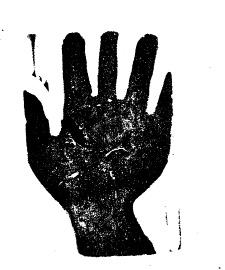Goal: Suffrage for women of Kuwait
Success in achieving specific demands: 6 out of 6 points
Survival: 1 / 1
Growth: 3 / 3
The country of Kuwait acquired independence from the UK in 1961. Women seized the moment to seek further liberation. As an act of defiance, many women burned their robes, rejected notions of female dress. A year later, the Kuwaiti parliament passed new election laws that limited the electorate to men over the age of 21, whose families lived in Kuwait prior to 1920.
Women from the first graduating classes at Kuwaiti universities decided to form the Women’s Cultural and Social Society (WCSS) in 1963. In an ostensibly Westernised society, Kuwaiti women remained persistent in their campaign for more rights, particularly the right to suffrage.
In 1973, Kuwait’s all-male parliament reviewed a bill that intended to grant women the right to vote and run for elected office. With much pressure from the conservative, Islamic populations, the bill was rejected and never really had a chance to be passed.
In 1982, the women of Kuwait secured a victory when Kuwait became the first Arab country in the Persian Gulf to legalise abortion. The same night that the announcement was made, several women marched in demand of suffrage. A week before the legalisation of abortion, the all-male parliament had once again rejected a bill that would have granted Kuwaiti women suffrage.
Later, in 1984, the suffrage movement appeared to be gaining momentum.
The emir of Kuwait, Jaber Sabah, and the prime minister, crown prince Saad Sabah both publicly voiced support for a women’s suffrage bill. At this point, women made up 52 percent of the population.
A poll by Kuwait University suggested that 58 percent of eligible men opposed suffrage for Kuwaiti women and only 27 percent supported it.
The Kuwaiti parliament rejected a similar bill the following year, in 1986. Consequently, the highest position in government accessible to Kuwaiti women was assistant secretary.
Invasion
During the 1980s, Kuwait decided to help fund Iraq’s war with Iran but refused to absorb the resulting Iraqi debt. In retaliation, Iraqi forces invaded Kuwait in 1990 and occupied Kuwait until 1991.
Though many women feared that the Iraqi occupation would be a hindrance to their campaign for suffrage, some historians argue that the occupation did much to gather support for the campaign.
Throughout the occupation, women played vital roles as hospital volunteers and others were more active in the resistance and smuggled food and weapons across checkpoints.
Following Iraq’s exit from Kuwait, the Kuwaiti government assured the women of Kuwait that they would be recognised for their efforts with greater participation in the political process. Accordingly, the government appointed Nabila al-Mulla as the first female ambassador in the Persian Gulf in 1993. Suffrage, however, was still excluded.
The WCSS continued to develop support for the suffrage movement and at times support came from unlikely areas of the population.
After the occupation, a group of male Islamic fundamentalists announced their support for the campaign and other Western influences.
The group, which called itself the Islamic Constitutionalist Movement, was born during the Iraqi occupation and assumed a role similar to those played by the Kuwaiti women.
In May 1999, the emir issued a decree granting women the right to vote and run for elected office. Under the constitution, however, parliament could overrule the emir and it did, rejecting the suffrage bill.
Taking risks
Following the parliament’s decision to overrule the emir, the campaign began to take more risks and demonstrate more. The movement first experimented with more risky nonviolent action in 1996 when 500 women stopped working for an hour to demand suffrage.
In 2002, several women held a demonstration near two voter registration centres in Kuwait. The demonstrators waved banners outside the two centres, but were eventually asked to leave. Kuwaiti women continued to be aggressive in 2003. There were reports of demonstrations involving over 1,000 women in a country with a total population of two million. The campaign also unsuccessfully sued both the minister of the interior and the speaker of parliament.
During the elections of 2003, women established mock ballots that allowed hundreds of women to cast symbolic votes for real candidates.
Building on the energy of previous years, the campaign really captured the attention of the entire nation in 2005. So much so that a nonviolent anti-women’s rights campaign came into existence in Kuwait. Mostly consisting of staunch Islamists, the campaign organised rallies and criticised foreign influence.
The women’s campaign, however, also received some new support in 2005 from the Kuwaiti Islamist Ummah Party, which became the first Sunni Muslim group in the Persian Gulf region to publicly support women’s suffrage.
In March 2005, 1,000 demonstrators gathered peacefully outside of the Kuwaiti parliament to reinforce their demand for suffrage.
A small group of male anti-suffrage protesters made their presence felt at the demonstration, but were largely overshadowed by the pro-suffrage group. Many of the women involved in the demonstration wore pale blue to represent the struggle for suffrage.
On 17 May 2005, after relentless resistance from conservatives, the Kuwaiti parliament passed a bill, granting the women the right to vote and run for elected office. The final vote in parliament saw 37 votes in favor and 21 votes against.


